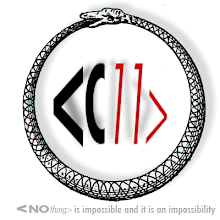 What TASRN is really interested in regard to this research is the ‘placedness’ of the cultural products that in Tasmania have been understood as "apple seed" necklaces, etc. A large part of this placedness – Tasmanian-ness ?– is to do with the cultural cargo these objects carry.
What TASRN is really interested in regard to this research is the ‘placedness’ of the cultural products that in Tasmania have been understood as "apple seed" necklaces, etc. A large part of this placedness – Tasmanian-ness ?– is to do with the cultural cargo these objects carry.TASRN research has brought to light some interesting information. It is below in dot points identifying the key points.
1. The necklaces understood as 'Tasmanian Apple Seed Necklaces' it now seems that they were indeed made elsewhere – or at least a great many (most?) of them were;
2. The form and materials used in these necklaces appear to be and indicate that they are of Asian origin – and in some cases the Pacific region and/or Central & South America;
3. These necklaces seem to be similarly imagined as “Apple Seed Necklaces” in the USA;
4. It is increasingly evident that the palawa (Tasmanian Aboriginal) community in Tasmania has no memory of people in their community making such material – nonetheless memories of makers are still being sough and the lack of this information does not by necessity discount that possibility ;
5. There seems to be a paucity of information available in the ‘antique market’ in Tasmania that can attribute a clear Tasmanian provenance for these objects or their being made in Tasmania – however it has been discovered that the TMAG does indeed have three relevant objects in its reserve collection contrary to earlier advice;
6. That there is increasing evidence that these necklaces and kindred objects were quite likely that the key objects have been made in The Philippines and/or New Guinea with others being made throughout the Pacific region – and it may well be the case that they are still being made there and/or in other places in Asia or the Pacific;
7. That seeds in necklaces that was purchased at Tullochs Auctions – Launceston Tasmania – as “Apple Seed Necklaces” have been independently and scientifically verified via botanic testing as being made entirely of ipil seeds ( ipil-ipil _Leucaena leucocephala ) a tropical plant that cannot grow in Tasmania – nor can this plant be imported to Australia currently in any form because it is a destructive and invasive “woody weed”;
8. That it is possible to have seeds in artefacts identified, and verified, in like manner in a non destructive way;
9. That it remains a possibility that at least some of these necklaces and other items understood as “Apple Seed Craft” have been made in Tasmania but this is yet to be verified via oral histories etc.;
10. That there is a possibility that this material may well have been imported into Tasmania since early times (even pre WW1) from Asia and/or the Pacific but this too is yet to be verified;
11. 'Tasmanian Collections' of this material can be seen as an important indicator of Tasmanian adoption, adaptation and assimilation of these objects as ‘Tasmanian’ in the ‘Tasmanian cultural imagination’ with Tasmanian cultural cargo, social histories, etc. These collections can be seen an exemplar of this kind globalisation at work in Tasmania and as it can found elsewhere – the USA almost certainly and possibly the UK as well nonetheless somewhat differently to that to be found in the Tasmanian vernacular.
This information and interpretations of it are currently being tested within the network and its credibility is being tested in the public domain. Hopefully via this process TASRN will be able to glean more information.
If you are reading this and have something information to offer please eMAIL AppleSeedResearch@7250.net or leave a comment in the comment section below.

No comments:
Post a Comment